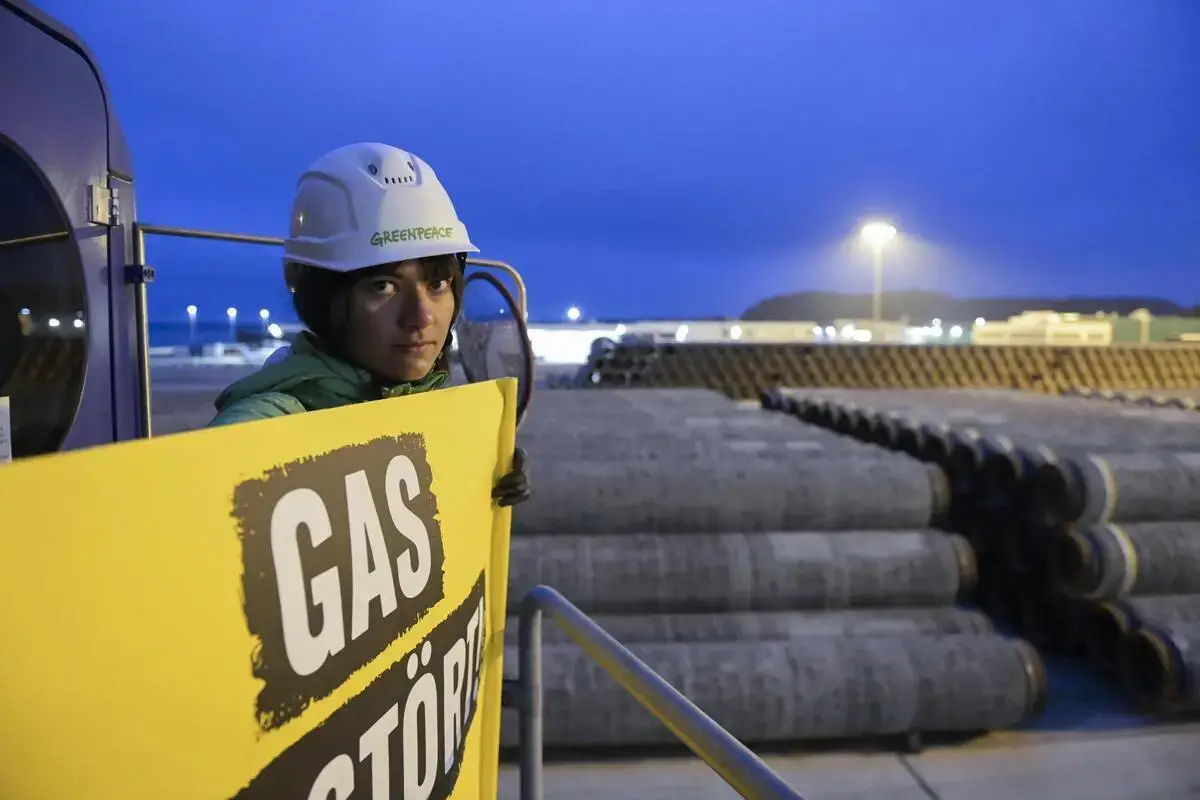Greenpeace Protests LNG Terminal Construction at Mukran

On Thursday, a group of Greenpeace activists blockaded an OSV laden with gas pipeline sections at the port of Mukran, Germany. The pipe is destined to become part of a 25-nm gas line from a new LNG receiving terminal at Mukran to the port of Lubmin, where it will interconnect with the distribution grid.
The project is a high priority for the German government, which has worked hard to assure continuity of energy supplies for consumers and businesses in spite of a Russian gas shutdown. The administration of Chancellor Olaf Scholz has committed to installing seven LNG receiving terminals in Germany, initially centered on floating storage and regasification units (FSRUs). The Mukran terminal is one of them.
Greenpeace believes that the scale of of Germany's LNG terminal plans do not align with national climate goals, given the amount of the resulting emissions and the market lock-in that the infrastructure will create. “With oversized LNG projects like here on Rügen, Germany is cementing its dependency on fossil fuels for decades to come. In order to meet the climate targets, gas consumption and thus the volume of LNG imports must fall drastically in the coming years," said Karsten Smid, a Greenpeace spokesman, in a statement Thursday.

Image courtesy Greenpeace / Gregor Fischer

that matters most
Get the latest maritime news delivered to your inbox daily.
German environmental organization NABU has also called for a halt to the Mukran-Lubmin pipeline, arguing that it would damage protected marine reserves along the route. "The planned lines run continuously through Natura 2000 areas and legally protected biomes, which will be destroyed or damaged by the construction. The mining authority assessed this environmental destruction in the approval process completely inadequately and incorrectly," NABU state manager Rica Munchberger told NDR.
The pipelayer Castoro 10 is already in place and prepared to begin work shortly.
